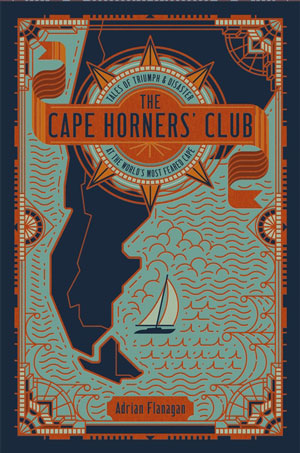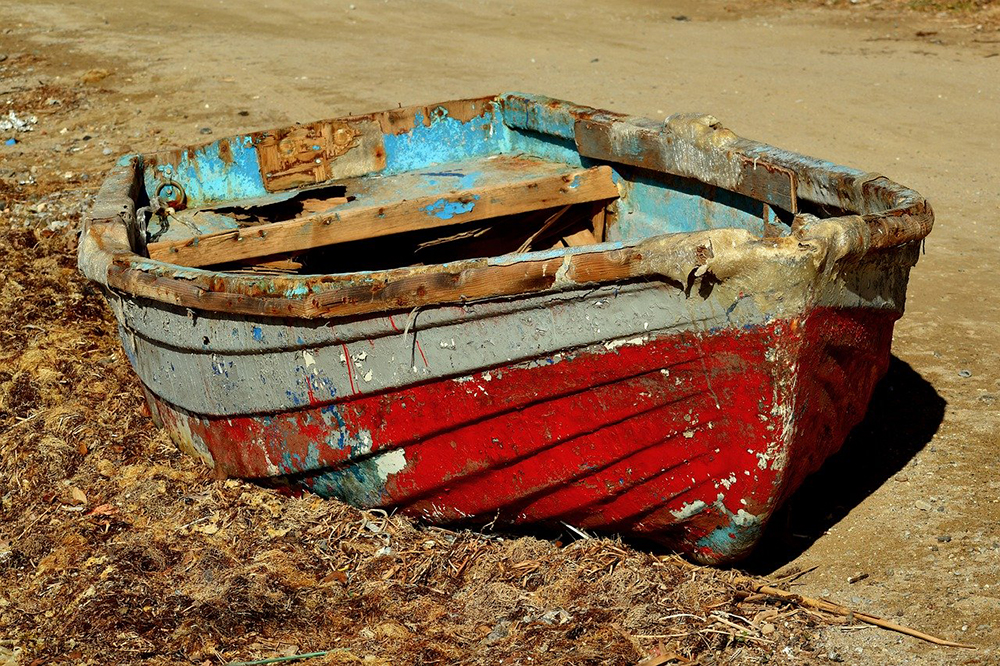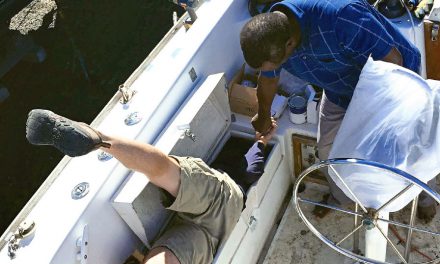 As a nautical author, I know why Adrian wrote this book. There is nothing quite as satisfying as reliving your sailing adventures by committing them to paper (or electronic files.) The highs, the lows, the beauty and the inner turmoil, you can relive each detail as you review your logbook, look at your photos and let your mind drift back through each watch, each sail change. And when the adventure you undertook tested you severely, the catharsis of laying it out in words helps you regain perspective. However, the job of a reviewer is not to sympathize with the author, it is to help potential readers decide if they should invest time and money in yet another story about sailing through potentially dangerous turbulent seas, in a remote area where few will ever venture.
As a nautical author, I know why Adrian wrote this book. There is nothing quite as satisfying as reliving your sailing adventures by committing them to paper (or electronic files.) The highs, the lows, the beauty and the inner turmoil, you can relive each detail as you review your logbook, look at your photos and let your mind drift back through each watch, each sail change. And when the adventure you undertook tested you severely, the catharsis of laying it out in words helps you regain perspective. However, the job of a reviewer is not to sympathize with the author, it is to help potential readers decide if they should invest time and money in yet another story about sailing through potentially dangerous turbulent seas, in a remote area where few will ever venture.
For me, since I had the privilege and relatively extreme adventure that is voyaging around Cape Horn non-stop from east to West, albeit with a partner, there is no question. This book was one I enjoyed reading. Adrian uses English clearly and concisely, knows how to tell a story and is careful to separate his own voyaging stories from those of others he has studied or interviewed. The book focuses almost exclusively on singlehanders who have attempted and mostly succeeded in sailing around Cape Horn without using the potentially easier route through the Beagle Canal or Straits of Magellan. He vividly tells of their mishaps and clearly describes the efforts they took to keep their boats (and themselves) afloat and sailing onward despite extreme fatigue, cold, and sometimes ferocious winds. Several of the people he writes about were involved with either organized races or attempts to break records, but he also tells of those who braved the Roaring 40’s and Screaming 50’s either to test themselves and their boats or because they felt this was the logical route along what usually was a circumnavigation. Most of these sailors are ones many of us have heard of. But in each case Adrian seems to get inside the heads of his protagonists and provides either fresh insights or new information. He also described clearly and concisely the mechanical problems they faced.
I have two small quibbles with this book. First, there is no discussion of the differences between sailing east about as opposed to west about, nor are the hurdles of each option explored. In an interview I once did with Chay Blyth, I asked him why he created a round-the-world race for amateurs which went from east to west against the prevailing winds. His answer was that, though it may be harder, sailing east to west is far safer because in the strongest winds and most dangerous seas, the mariner is beating, not running, so there is far less risk of pitch-poling or broaching and being rolled over. Secondly, there is no discussion of how lack of sleep affected these sailors or how they got sufficient rest to keep going.
For someone tempted to sail towards that rock at the bottom of the world, there is a lot to be gained from this book. It clearly illustrates how severely you and your gear will be tested. For readers looking for an insight into what makes anyone attempt a singlehanded voyage such as this, I think it also succeeds. For the armchair sailor, I think you will enjoy meeting and getting to know sailors who might sometimes appear crazy, but who all deserve admiration for their sheer determination.
The Cape Horners’ Club: Tales of Triumph and Disaster at the World’s Most Feared Cape by Adrian Flanagan (Adlard Coles Nautical, 2017; 296 pages)





